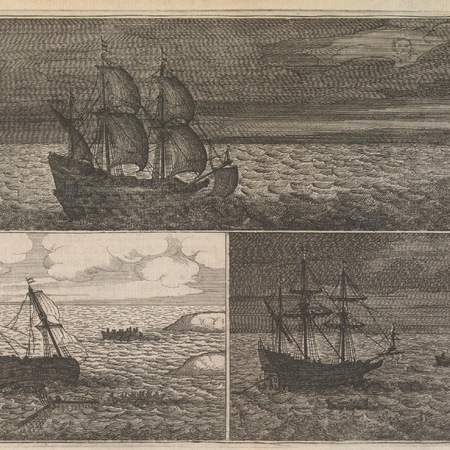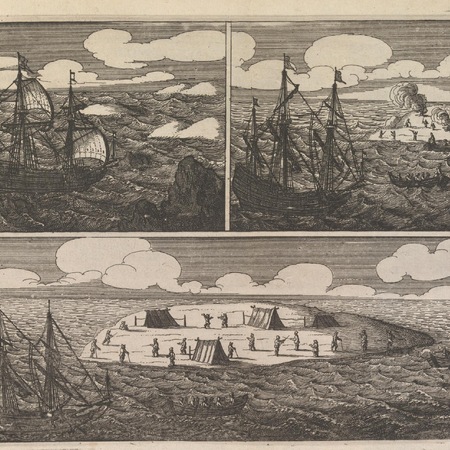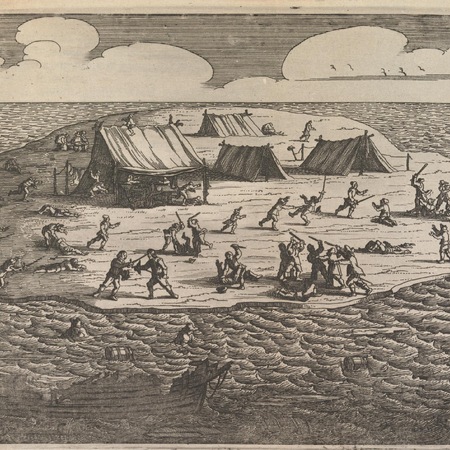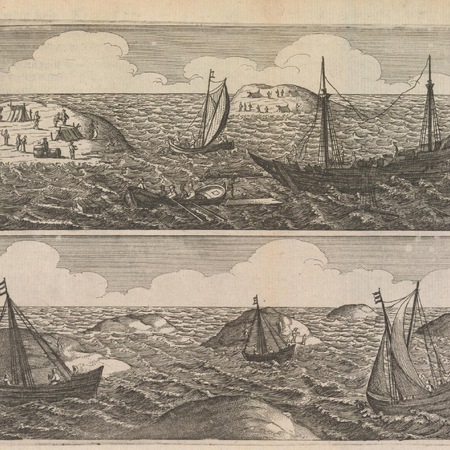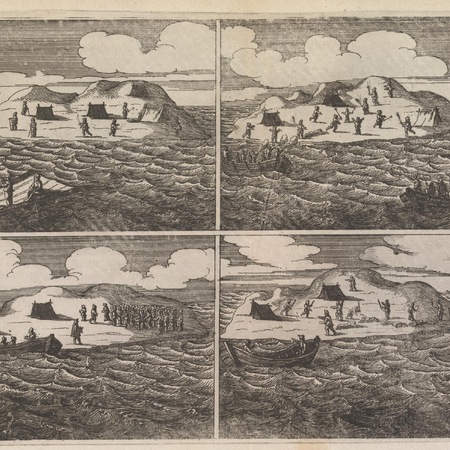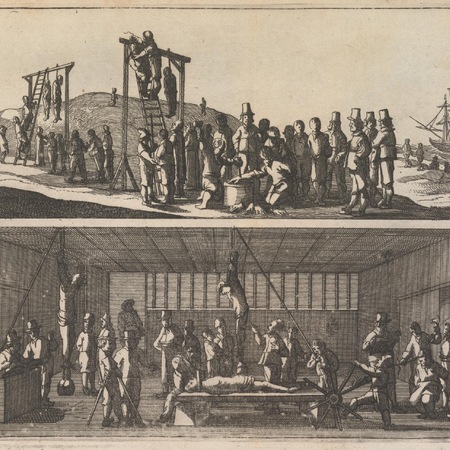The VOC ship Batavia, just newly built, sailed out in October 1628 as part of the usual VOC autumn fleet. It derives its fame in particular from the shipwreck it suffered off the coast of Australia on 4 June 1629, and the bloody events that subsequently unfolded on the small islands, the Houtman Abrolhos, where the crew was trapped for over two-and-a-half months while the ship's chief merchant and skipper, along with some crew members, went to get help in Batavia by sloop.
Murders and executions
In response, the highest remaining official, Jeronimus Cornelisz, formed a council on the islets, which soon changes composition due to a kind of coup, but with Cornelis still involved as the highest-ranked of the marooned. This council then proceeded to have more and more of the survivors killed - initially still with the appearance of legality, by imposing death sentences for minor offences, but later simply by having them murdered. A total of 124 of the survivors were killed. On 17 September, the chief merchant, Francisco Pelsaert, returned to the site of the shipwreck with the ship Sardam, found out what had happened and interrogated and tried the survivors on the spot. Jeronimus Cornelisz, along with his main accomplices, was hanged on Robben Island, one of the Houtman abrolhos, on 2 October. Two crew members were left behind on the Australian mainland. A good number of others were later tried aboard the Sardam and/or in Batavia, and received punishments ranging from being broken on the wheel, to having to attend the executions.
Mutiny?
Pelsaert's account, which became known as the Pelsaert-journael, is the main primary source on the events. In this account, Pelsaert reports that Jeronimus Cornelisz was a follower of a Christian sect that did not believe that human or divine laws also applied to 'the elect' (including himself) and that even before the shipwreck he was planning a mutiny, which eventually culminated in the massacres on the islets. His assessment has been echoed by many historians. However, a book by Jaco Koehler, published in 2019, points out that Pelsaert had great self-interest in presenting things this way in his account, partly to explain that after the shipwreck, he, as the highest commander, had run off in the sloop. In fact, Koehler argues, there is no good evidence that Cornelisz was plotting a mutiny or was a supporter of this Christian sect. In his view, therefore, the events on the Houtman Abrolhos have wrongly gone down in history as a mutiny.
Publications in Europe
The bloody events were the subject of great outrage and interest in Europe. Immediately after the events became known in 1630, the short pamphlet Droevighe Tijdinghe, which summarised the events in song form, was published. Finally, in 1647, a book about the events was published, Ongelukighe Voyagie van´t Schip Batavia.
